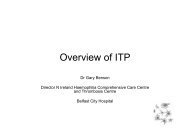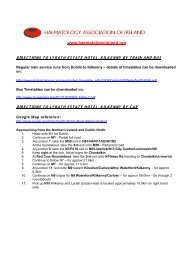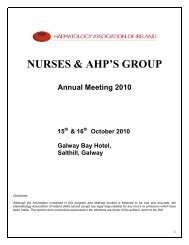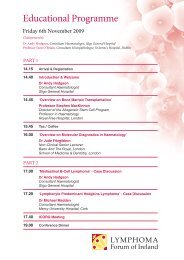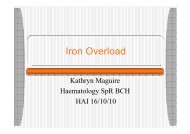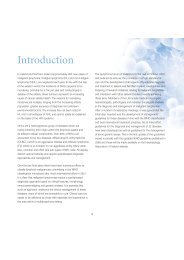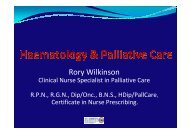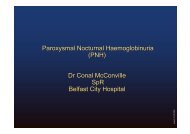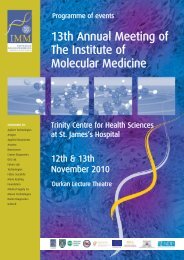Guidelines on Diagnosis and Treatment of Malignant Lymphomas
Guidelines on Diagnosis and Treatment of Malignant Lymphomas
Guidelines on Diagnosis and Treatment of Malignant Lymphomas
Create successful ePaper yourself
Turn your PDF publications into a flip-book with our unique Google optimized e-Paper software.
Post-Transplant<br />
Lymphoproliferative Disease<br />
Definiti<strong>on</strong> <strong>and</strong> Incidence<br />
A spectrum <strong>of</strong> lymphoproliferative disease (PTLD) is described in<br />
transplant recipients, including post-transplant infectious<br />
m<strong>on</strong><strong>on</strong>ucleosis, benign polycl<strong>on</strong>al polymorphic B-cell hyperplasia,<br />
<strong>and</strong> m<strong>on</strong>ocl<strong>on</strong>al polymorphic lymphoma. Most are EBV-related.<br />
ICD – 0 Code:<br />
9970 / 1 (Polymorphic PTLD)<br />
Management<br />
Patients with post-transplant infectious m<strong>on</strong><strong>on</strong>ucleosis or<br />
benign polycl<strong>on</strong>al polymorphic B-cell hyperplasia may be<br />
treated with antiviral drugs such as acyclovir. Patients with<br />
overt lymphoma should be treated with withdrawal <strong>of</strong><br />
immunosuppressi<strong>on</strong> to levels c<strong>on</strong>sistent with graft survival,<br />
<strong>and</strong> appropriate intensive Rituximab c<strong>on</strong>taining chemotherapy<br />
such as R-CHOP. Close attenti<strong>on</strong> is required for preventi<strong>on</strong><br />
<strong>and</strong> management <strong>of</strong> opportunistic infecti<strong>on</strong>s in these high-risk<br />
patients. Patients should be managed in a centre where a<br />
multidisciplinary team with expertise in both NHL <strong>and</strong><br />
management <strong>of</strong> transplant patients is available<br />
65



